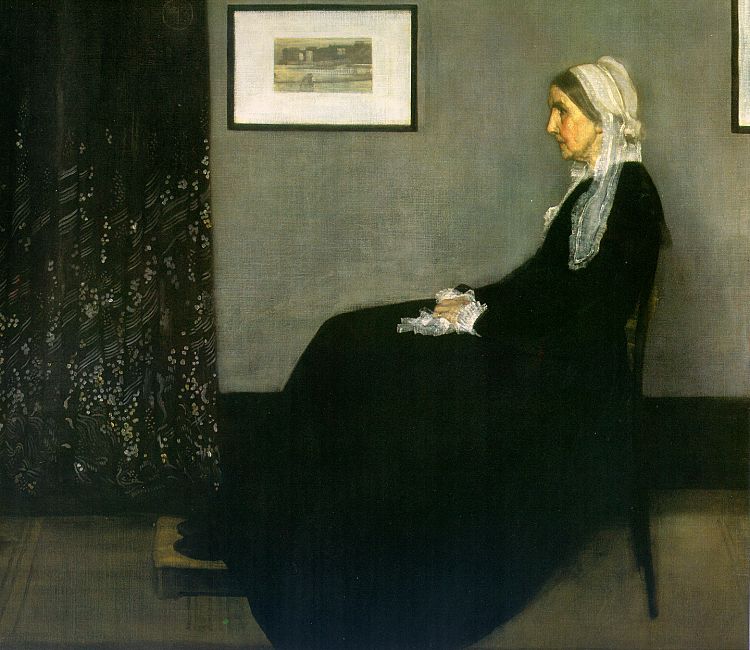Arrangement
in Grey
and Black: Portrait of the Painter's Mother
(A.K.A. "Whistler's Mother")
James Abbott McNeill
Whistler
American
painter/etcher
(1834-1903)
1871
Musee d'Orsay, Paris
Oil on canvas
144.3 x 162.5
cm (56 3/4
x 64 in.)
Jpg: CGFA
James
Abbott McNeill Whistler (1834-1903)
would prove to be the most important American Artist to that time and
would
have a profound impact on the course of European and modern art. His
colorful
personality along with his very unique style would place him at the
center
of a whole storm of controversies.
He
was the first to declare Art for
Art Sake, and to make the point, he would refuse to give conventional
titles
to his paintings calling them "Symphonies in White", "Nocturne blue and
Gold", "A little Note in Yellow", etc.. His intent was to force the
public
to view his paintings for the art of canvas and paint instead of
what it may have represented in life. Of course, all he managed to do
was
create these outrageously long titles since his oblique designations to
subject matter proved to be totally useless for any kind of reference.
Although
his most well known work
is of his mother (which he only ever called "Arrangement in Grey and
Black") his drawings and etchings made him one of the preeminent
artist
in the world and is often, today, overlooked at just how truly great he
was in that medium.
The
impact that Whistler had on John
Singer Sargent, as well as the rest of his contemporaries, is hard to
over
estimate.
Note:
|

